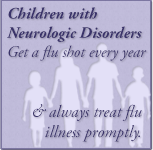About Us

We at CDC are committed to finding out how many people have cerebral palsy (CP), understanding the risk factors for CP, and helping parents and families recognize the early signs of CP.
Recognizing the Early Signs of Cerebral Palsy
We naturally think that a child's growth should be measured by his or her height and weight. From birth to 5 years of age, a child also should reach movement goals―also known as milestones―such as rolling over, sitting up, standing, and walking. A delay in reaching these movement milestones could be a sign of CP.
Through the “Learn the Signs. Act Early.” campaign, we at CDC work with our local, regional, and national partners to teach parents about how their child should be developing, including the early warning signs of CP and other developmental disorders, and encourage developmental screening and intervention, as needed.
Determining How Many People Have Cerebral Palsy
By tracking the number of children with CP over time, we can find out whether their number is rising, dropping, or staying the same. We also can compare the number of children with CP in different parts of the country and look at the different traits or features of children with CP. This information can help us look for risk factors and possible causes for CP.
Understanding Risk Factors
We at CDC also support public health research, including studies into possible causes of developmental disabilities. Research is the next step after tracking. For instance, tracking can help identify those who are at a higher risk of developing CP. Researchers can do studies to find out potential risk factors for or ways to prevent CP. Both public health tracking and research efforts provide information needed to direct public health prevention efforts. What is learned from public health research affects public health action.
Increasing Awareness
At CDC, we work to increase knowledge of some of the causes of CP that can be prevented. For example, babies with severe jaundice can be treated with special lights (phototherapy) to stop the development of kernicterus, a known cause of CP. Similarly, routine vaccination of babies prevents many cases of meningitis, another known cause of brain damage that can, in turn, cause CP. Making sure that children are properly buckled in car seats or booster seats when riding in cars can help prevent head injury during an accident; head injury is another cause of CP.
Community Outreach
We at CDC have been working with our partners to increase awareness of CP and its effect on families. CDC held the first annual Cerebral Palsy Awareness Day in March 2006. In the years since then, CDC and the Autism and Developmental Disabilities Monitoring (ADDM) Network have continued to work with community partners to hold programs in metropolitan Atlanta and in ADDM Network communities across the United States to bring greater attention and awareness to CP. To watch our most recent Cerebral Palsy Awareness Event, please visit: http://www.alphtc.org/cerebralpalsyawarenessday
For More Information
To learn more about CDC’s work, click on the following links:
Tracking & Research
Data & Statistics
Learn the Signs. Act Early. Campaign
- Page last reviewed: February 3, 2017
- Page last updated: January 15, 2015
- Content source:



 ShareCompartir
ShareCompartir